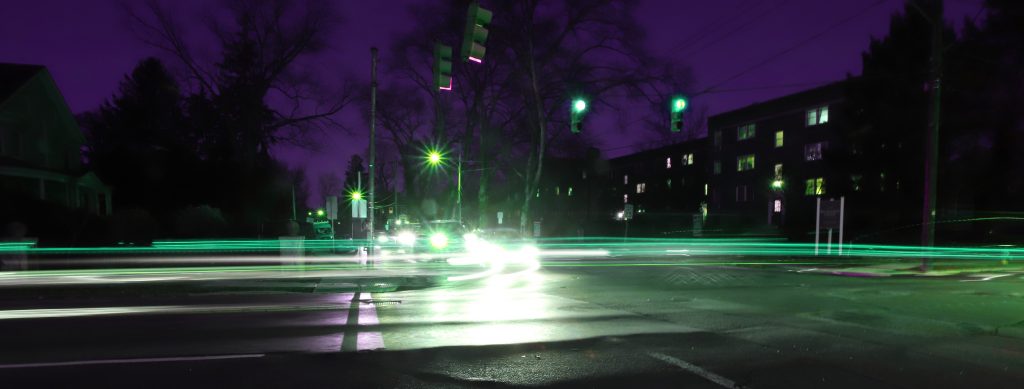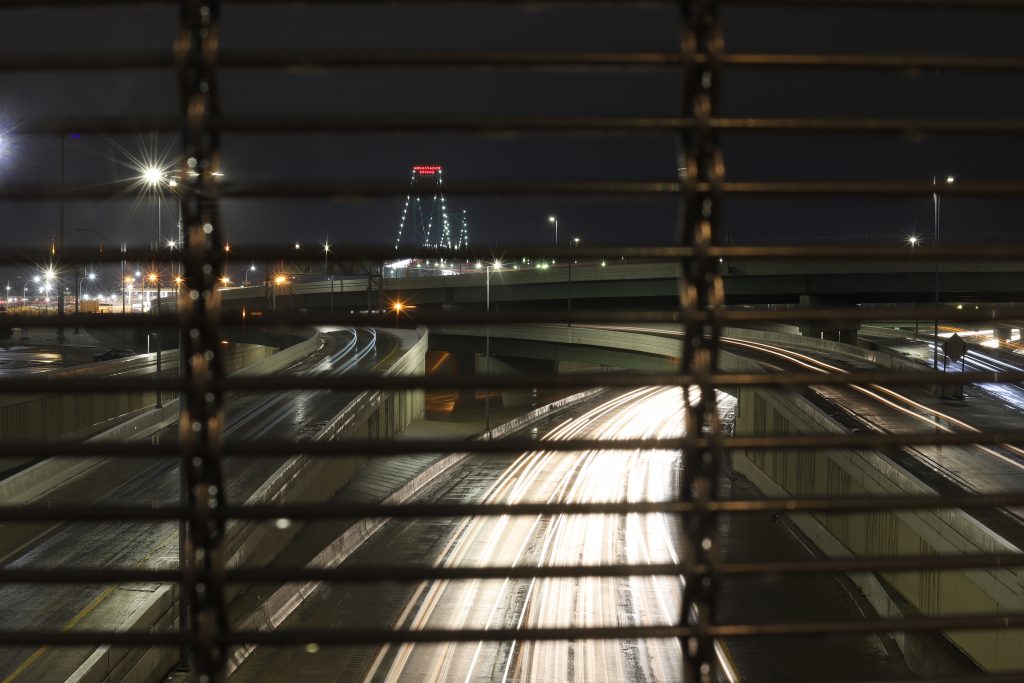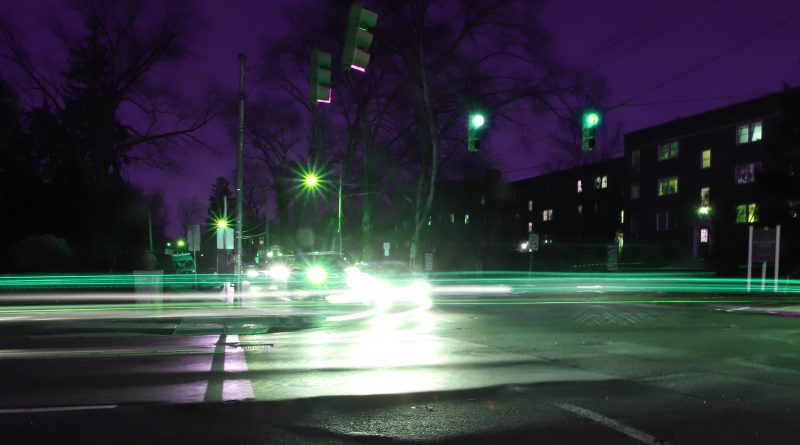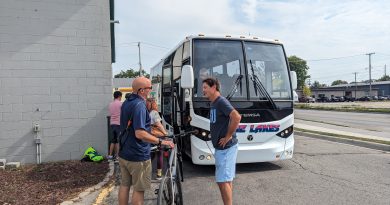MDOT: Rebrand And Replace. Some Ideas From The MAP Conference.
I’ve been attending the Michigan Association of Planning conference, which is taking place virtually across the Land of the Rising F150 Super Duty. In one session, we were asked to think about what planners can contribute to the future of Michigan, and, by and large, a great set of ideas were presented. Perhaps the most notable one was the idea of bringing planners to the state capitol to meet with legislators about planning topics. I mean, they have all kinds of other, far less constructive rallies in Lansing, right? Why not!? And my pie-in-the-sky wish? Being able to get between any city in Michigan on frequent train service. My starting point for that? Abolishing MDOT, our state’s department of transportation. MAP’s own Wendy Rampson shot me a DM saying that I needed to “please be constructive,” and how can I ever propose solutions if I’m just tearing things down all the time? So, I decided to write about my plan.
Precedents For Rebuilding A State Agency
MDOT, as I’ve written before, is extraordinarily well-funded and extraordinarily unaccountable. It’s also disproportionately responsible, directly and indirectly, for a large number of deaths in the state, by way of not only traffic violence but also by way of subsidizing the fossil fuel paradigm. It also eats up state revenues. These things makes MDOT closer to a police department than to a transportation agency. No, really.
If you recall, the Department of Energy, Great Lakes, and Environment was refashioned from the ashes of the Michigan Department of Environmental Quality, which suffered some reputational damage under the tenure of embattled former governor Rick Snyder, whose Shermanesque march to the sea of austerity was directly implicated in the Flint water crisis.
Lethal Projectiles: Car Culture, Gun Violence, and Police Shootings
Gretchen Whitmer demonstrated some savvy in rebuilding this department and including an especial focus on water. Water crises continue to plague the natural resources and municipal infrastructure of a state surrounded by some of the largest freshwater lakes on earth, and it’s been a hallmark quest for a governor who has struggled to push meaningful infrastructure investment against a Republican legislature that seems sworn to avoid working on, well, anything related to infrastructure. (Oh, wait, except roads. They do love their roads). If this refashioning of a massive agency has been done for MDEQ, there’s no reason why it can’t be done with MDOT. I thus present to you the Michigan Department of Mobility And Multimodal Infrastructure (MAMI, pronounced “mommy,” or “mami”).

Presently, MDOT functions almost exclusively as a road engineering agency. It builds roads and maintains roads. Per the MUTCD, it coordinates engineering studies whenever someone wants to install a crosswalk. While it does nominally have an office focusing on passenger rail, for example, a cursory look at the agency’s multibillion dollar annual budget indicates that virtually all of its budget goes toward– wait for it- roads.
And it’s not taking care of its business. A disproportionate amount of its funding comes not from user fees, but from federal sources. MDOT freely admits that it cannot afford to maintain the state’s overbuilt road network, for example. Gretchen Whitmer is unable and unwilling to devise new sources of revenue to fund this. Republicans want increased road spending funded through cuts to other social programs, like, say, EGLE’s half billion dollar budget. But Whitmer realizes she can’t increase costs to consumers during a time of economic uncertainty. Especially not if she wants to win reëlection next year.
The step she did take within her executive authority was technically quite clever, but, in the opinion of planners, utterly misguided. Hundreds of millions of dollars of bonding to support new lane mile construction? Whitmer is borrowing against the future to redo the wallpaper on the Titanic.

Bienvenida, MAMI
MAMI, on the other hand, is different. Most generally, A few key priorities will be as follows:
1. Throwing out the Manual on Uniform Traffic Control Devices. There’s an article coming on this very subject, so I’ll save the juicy details, but suffice it to say, we need to spend more time building crosswalks and traffic calming measures where there are accidents, and less time conducting expensive engineering studies of roads that are messed up for well-understood reasons. Sara Bronin presented at MAP yesterday, but not on this subject.
2. Toll Roads. Toll roads in Michigan will ensure that drivers on interstate highways and major trunkline roads are paying their fair share. These will be assessed using the industry standard EZPass, a combination of wireless transponders and pay-by-plate systems. The impact will be disproportionately heavy to suburban commuters in the wealthier enclaves of cities like Plymouth, Northville, Canton, and Ann Arbor, where some of the state’s most heavily-trafficked sections of roadway are. State routes M-14, M-59, and interstate highways I-94, I-96, and I-75 are prime targets in Metro Detroit. I-75 and I-69 around Flint is also an extraordinarily congested tangle of highways. Tolling would serve as congestion pricing and would reduce the state’s reliance on federal funding, ultimately saving taxpayers money in the long run. A substantial portion of revenues would be earmarked for transit specifically (see agenda item #8).
3. Rightsizing the state’s bloated transportation infrastructure. MDOT continues to spend more money to maintain more lane miles, while the state’s vehicle miles traveled do not decrease, but while the state’s population remains stagnant. The proposal to remove I-375, for example, and turn it into a surface-level street, has been shelved indefinitely. Why? Well, MDOT received broad support for an option that eliminated most of the lanes. They turned around and proposed a solution with more lanes. It’s demonstrably foolish. Anyway, it’s been a decade in the making, and it’s unlikely that we’re going to get there any time soon because it’s not their prerogative. Meanwhile, MDOT continues to throw hundreds of millions of dollars per year at highway “modernization,” much of which involves lane mile expansion. Which… no one wants. MAMI will make demonstrated VMT reduction a requirement of funding any project.
4. Expanded development of nonmotorized infrastructure. While MDOT spends billions each year to not only maintain but also expand lane miles, MAMI will not only reduce lane miles, it will also embark on a hitherto unfathomable level of development of specifically nonmotorized transportation infrastructure. Imagine protected bike lanes to take you the whole way from Ann Arbor to Detroit. Being able to bike from Pontiac to Detroit. Royal Oak to St. Clair Shores. Etc.
5. Prioritizing Passenger Rail. Ten trains per day between Chicago and Pontiac, traveling at 125mph or more west of Detroit. Oh, you think it’s expensive? Here’s a fun number for you: You could buy 20 (twenty!) of the new Siemens electric locomotives that Amtrak is using for about 3% of MDOT’s current budget. This would also requiring extensively rebuilding track between Ann Arbor and Detroit, and likely beyond. It can be done. It needs to be done.
6. Coordination with municipalities, the DNR, and counties to integratively plan projects, especially coordinating green stormwater infrastructure into projects. MDOT has routinely prioritized grey infrastructure, meaning concrete and steel. Remember the flooding? MDOT argued that their system was fine because the pumps were working– even if the pumps lacked electricity to run. (I argued that this was equivalent to arguing that a patient died not of a gunshot wound but rather of blood loss following the sustained gunshot wound). Require consideration of GSI in all road projects. Plant trees along roadways.
7. Require social cost calculations to be included in any road project. This must necessarily go beyond just carbon, as carbon costs do not account for things like particulate emissions from toxic brake dust or tire dust. Nor do carbon costs account for the human impact of traffic violence. We know that roadway design directly affects human safety. More than a thousand Michiganders die each year from traffic violence and traffic-effected health causes. Billions more in damages are caused in the form of pollution– illness, emergency room visits- and car crashes. This causes an immeasurable loss of productivity in our state’s already-stagnant economy.
8. Enhance support for public transit in municipalities, and support coordination of regional transit network development. Detroit’s failure to develop a regional network is a combination of toxic factors including the legacy of notorious racist Brooks Patterson, who ruled Oakland County for decades, the legacy of Reagan Democrat Mark Hackel, who enjoys considerable support from a rabidly pro-Trump, anti-any-kind-of-government-spending-unless-it’s-roads voter base in Macomb County, and the ongoing reign of Detroit Mayor Mike Duggan, who has prioritized the mollycoddling of suburban corporate power and neoliberal dark money over the needs of majority Black Detroit. Duggan has slashed DDOT service after spending billions to subsidize suburban billionaires like Dan Gilbert, the Ilitch family, and the Moroun family (of Ambassador Bridge fame). It is unfathomable that Detroit’s regional transit is this bad. Our region will continue to stagnate if we don’t address this.
9. Addressing rural issues beyond car dependency. Rural municipalities need flexibility to plan their local systems. Demand response transit like Dial-a-Ride is exorbitant on a per-ride basis, but it’s also a relatively small cost in a low-population area. This must be explored in order to maintain the vitality of small towns that have struggled against the metropolitan suburbanization in the past half-century, and MAMI can coordinate with MEDC and counties to facilitate improvements to rural mobility options.
Alternatively, the department might just rename itself the Michigan Department of Highways. Of course, any changes to MDOT’s funding structure would require changes to the state’s constitution, which, since the 1950’s, has mandated specific ways that road funding is allocated. Because we don’t believe in progress.
How am I doing, folks? Is this constructive enough? Are we on board? Oye, MAMI?


